History of Japanese Coins
| ANCIENT TIMES |
Around B.C.1500 | A barter system |
|---|---|---|
| Commodities like rice, clothes and salt and etc played a role of money. (Material money) | ||
| ASUKA HEIAN PERIOD |
621 | "Kai Yuan Tong Bao" was minted by Tang Dynasty. |
| "Fuhonsen" was minted by the government, modeling after the "Kai Yuan Tong Bao". | ||
| 708 | "Wado Kaichin" or " Wado Kaiho" was minted by the government. | |
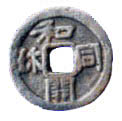 Wado Kaichin |
||
| A gold coin, two kinds of silver coins and twelve kinds of copper coins were issued by the government during 250 years or so following the mintage of the "Wado Kaichin". These copper coins are referred to as "Kochosen". Coins had not been minted until Toyotomi Hideyoshi minted gold coins. | ||
| Coins imported from China were circulated as money in the late Heian period (latter half of the 12th century). Placer gold was exported to China in exchange for the coins. | ||
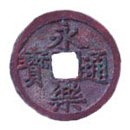 Traisen |
||
| KAMAKURA MUROMACHI PERIOD |
1404 | The trade between the Muromachi shogunate and Ming Dynasty started. The shogunate imported a lot of copper coins. Especially, "Yong Le Tong Bao" coins were circulated. "Shichusen" (privately-minted Japanese coins) were circulated and called "Bitasen" (bad quality coins). |
| At the Sengoku Period, Lord Takeda minted gold coins. | ||
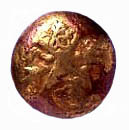 Koushukin |
||
| AZUCHI MOMOYAMA EDO PERIOD |
1587 | Toyotomi Hideyoshi minted various coins which are composed of gold and silver, such as "Tensho Naga Oban". But the common people used the coins imported from China and "Bitasen". |
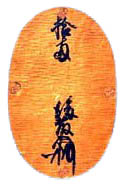 Tensho Nagao Oban |
||
| 1600 1601 |
The monetary system was established by Tokugawa Ieyasu. Tokugawa Ieyasu established "Kinza" gold mints and "Gvinza" silver mints to manufacture gold and silver coins. |
|
| 1636 | The Tokugawa Shogunate government established "Zeniza" to mint copper coins. | |
| 1670 | "Eiraku Tsuho" was prohibited from circulation, the government unified copper coins by minting "Kanei Tsuho". | |
| 1695 | The coins were reminted and the currency system was largely damaged by degradation of fineness of the coins. | |
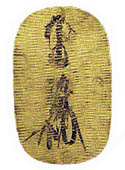 Oban |
||
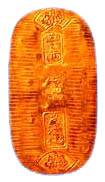 Koban |
||
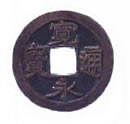 Kanei Tsuho |
||
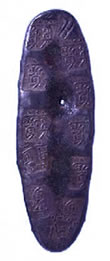 Tyogin |
||
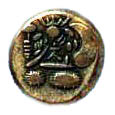 Mameita Gin |
||
| MEIJI ERA |
1868 | The first nationally-accepted paper money called “Dajyo Kansatu” was issued by the Meiji Restration government. |
| 1871 | The Government established Japan Mint at the peresent site of its Head Office. | |
| 1871 | The new coins regulation was promulgated. The gold standard was adopted (1yen = Gold 1.5g). The Government issued three kinds of coins, gold, silver and copper. | |
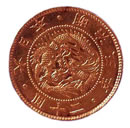 20-yen gold coin |
||
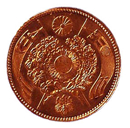 20-yen gold coin |
||
| 1882 | The Bank of Japan was established. | |
| 1897 | Coin law was promulgated. (1yen = Gold 0.75g) | |
| 1932 | The gold standard was substantially discontinued and shifted to a managed currency system | |
| 1938 | "Temporary Currency Law" was enacted, based on this law, subsidiary coins were issued. | |
| 1964 | Tokyo Olympic prize coins were minted. (The first commorative coin) | |
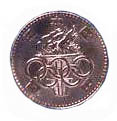 Tokyo Olympic prize coin (100 yen) |
||
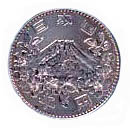 Tokyo Olympic prize coin (1,000 yen) |
||
| 1987 | The law concerning a unit of currency, issuance of coinage was enacted. |
If you want to visit the Mint Museum More Information






